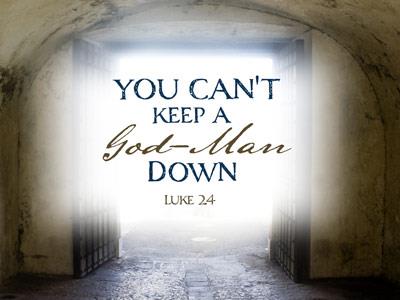-
Risen
Contributed by Matthew Kratz on Apr 17, 2025 (message contributor)
Summary: The significance of the “Risen” Christ is clearly proclaimed in Luke 24:1-12 as seen by: 1) The Empty Tomb (Luke 24:1–3), 2) The Angelic Messengers (Luke 24:4–7), 3) The Witness of the Women (Luke 24:8–10), and 4) The Unbelieving Disciples (Luke 24:11–12)
Now the other women arrived at the tomb as verse 2 records, where to their amazement, they unexpectedly found the stone rolled away from the tomb. The stone was far too heavy for them to maneuver, and the women had discussed the problem of how to move it while on their way to the tomb (Mark 16:3). They did not know of the guard detachment, which also would have prevented them from entering the tomb. It had been posted on Saturday (Matt. 27:62–66), when they were home observing the Sabbath. The guards, terrified by the earthquake and the appearance of the angels, had been rendered unconscious (Matt. 28:4). When they came to their senses they fled, and some reported what had happened to the Jewish leaders (v. 11), who initiated a cover-up (vv. 12–15). The stone was not rolled away to let the Lord Jesus out but to let them in. (McGee, J. V. (1991). Thru the Bible commentary: The Gospels (Luke) (electronic ed., Vol. 37, p. 293). Nashville: Thomas Nelson.)
From the description of the enclosure here, we get the English word “memorial” from this Greek word for tomb. (Utley, R. J. (2004). The Gospel according to Luke (Vol. Volume 3A, Lk 24:1). Marshall, TX: Bible Lessons International.). The environment that we have here involves a cavelike tomb with a large wheel-like stone that was rolled down a channel to cover the tomb opening. (Stein, R. H. (1992). Luke (Vol. 24, p. 604). Nashville: Broadman & Holman Publishers.) The tomb belonged to Joseph of Arimarhea, and it was situated in a garden close by Calvary. The traditional site (now the Church of the Holy Sepulchre) is within the present walls of Jerusalem, although in the time of Jesus it was probably outside the city (Wilcock, M. (1979). The Savior of the world: the message of Luke’s gospel (p. 206). Downers Grove, IL: InterVarsity Press.).
With no stone or soldiers to hinder them, the women, according to verse 3 went inside the tomb, but when they went in/entered, they did not find the body of the Lord Jesus (cf. Acts 2:36). The soldiers knew the tomb was empty, or they would still have been there guarding it. The Jewish leaders knew that the tomb was empty, or they would not have invented a false story to explain why it was empty. Mary knew the tomb was empty, or she would not have reported to Peter and John that it was. Peter and John also knew firsthand that the body of Jesus was not in the tomb. There is no explanation for the empty tomb other than that it was empty because Jesus had risen from the dead. Our faith does not depend merely on a set of texts and doctrines. It is founded on a mighty historical fact that the skeptic has never been able to overturn. It ought to assure us of the certainty of the resurrection of our own bodies after death. If our Master has risen from the grave, we need not doubt that his disciples shall rise again at the last day. (J. C. Ryle, Expository Thoughts on the Gospels. As cited in Crossway. (2023). ESV Church History Study Bible (p. 1571). Crossway.)
Poem: The resurrection of Jesus marks a new beginning in the history of the world. Just as the original act of creation began the first day of the week, so on (Resurrection Sunday) there is the dawn of a new day. Sin, Satan, death, and hell are vanquished! The body of believers continue to celebrate this decisive event each first day of the week. Sunday after Sunday, the words of Jesus are remembered; His body and blood is shared; His praises are sung. An early Latin hymn says it well: “Welcome, happy morning!” Age to age shall say; “Hell today is vanquished; Heav’n is won today!” Lo, the Dead is living, God forevermore! Him, their true Creator, All his works adore. “Welcome, happy morning!” Age to age shall say; “Hell today is vanquished; Heav’n is won today!” (Christian Worship 163:1 as quoted in Prange, V. H. (1988). Luke (pp. 257–258). Milwaukee, WI: Northwestern Pub. House.)

 Sermon Central
Sermon Central



